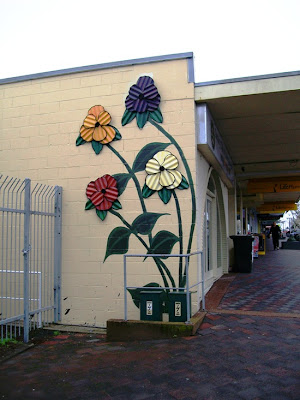We have a racecourse here in Avondale. It started in 1890, was enlarged in the early 20th century, and today was the stage for the last meeting of the Avondale Jockey Club, for at least a year. Hopefully. There's no real telling, at this stage, what will happen, due to huge debts, and the nature of gambling in this country.
I doubt that anyone local is terribly surprised to have learned of the venerable institution's woes. It's had tough times, really, since the night racing fiasco late last century. We've watched, and waited, witnessing the decline. Expecting a day like today to come.
So, on the last day of Avondale racing for this year, I wandered on down to say goodbye to a place that is a big part of my love for my home suburb.
The bloke who opens the gate to let the horses onto the track, studying the form.
I'm sure this used to be a tote. Now, it's simply a marker for executive carparks.
The stables used to be where my mum and I would stand, by the fence, watching the horses.
To me as a kiddy in the late 1960 and early 1970s, Avondale racecourse seemed to be huge, vibrant, and packed with people. I was nearly lost one time, in a sea of adult legs. Those days, though. are gone, and not just because I'm one of those adults now.
These used to be totes as well, I'm sure. There used to be so many people attending meetings here, they needed all the totes going that they could possibly fit in. These have been shut up for years.
It was a good day's racing, withn the weather more akin to early spring than the middle of winter. A nice day to say goodbye.
The last race of all.
The starting gates not put away just yet, as we punters, we farewellers of a long-standing part of Avondale's history, wend our way home.
Sunset at the racecourse. We're all crossing fingers, but -- the future will tell whether we're ever here again.
Update 19 December 2010: Just spotted this messageboard which linked to the post -- Racechat.
Update 19 December 2010: Just spotted this messageboard which linked to the post -- Racechat.





















































